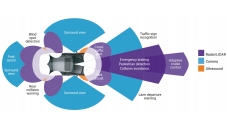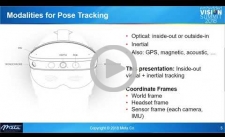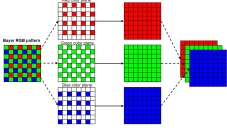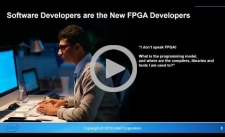| LETTER FROM THE EDITOR |
|
Are you in a start-up company that is developing a new product or service that incorporates or enables computer vision? (Or do you know of one that is?) We are still accepting submissions for the 2019 Vision Tank Start-up competition, which offers start-up companies the opportunity to present their new products and product ideas to attendees at the 2019 Embedded Vision Summit, the preeminent conference on practical computer vision, covering applications at the edge and in the cloud. But the deadline is next week, Wednesday, February 14, so don’t delay! For more information, including detailed instructions and an online submission form, please see the Vision Tank page on the Alliance website. Good luck! The Embedded Vision Summit attracts a global audience of over one thousand product creators, entrepreneurs and business decision-makers who are developing and using computer vision technology. The Embedded Vision Summit has experienced exciting growth over the last few years, with 97% of 2018 Summit attendees reporting that they’d recommend the event to a colleague. The next Summit will take place May 20-23, 2019 in Santa Clara, California, and online registration is now available. The Summit is the place to learn about the latest applications, techniques, technologies, and opportunities in visual AI and deep learning. And in 2019, the event will feature new, deeper and more technical sessions, with more than 90 expert presenters in 4 conference tracks and 100+ demonstrations in the Technology Showcase. Register today using promotion code SUPEREBNL19 to save 25% at our limited-time Super Early Bird Discount rate. For Alliance Member companies, also note that entries for this year's Vision Product of the Year awards, to be presented at the Summit, are now being accepted. If you're interested in having your company become a Member of the Embedded Vision Alliance, see here for more information! On March 27, 2019 at 11 am ET (8 am PT), Jeff Bier, founder of the Embedded Vision Alliance, will deliver a free hour-long webinar, "Embedded Vision: The Four Key Trends Driving the Proliferation of Visual Perception," in partnership with Vision Systems Design. Bier will examine the four most important trends that are fueling the proliferation of vision applications and influencing the future of the industry. For more information, including online registration, please visit the event page. For more than 20 years, Vision Systems Design has provided in-depth technical and integration insights focused exclusively on the information needs of machine vision and imaging professionals. Sign up today for a free subscription to stay up to date. Brian Dipert |
| SENSOR FUSION APPLICATIONS |
|
|
| HETEROGENEOUS VISION PROCESSING |
|
|
| UPCOMING INDUSTRY EVENTS |
|
SPIE Photonics West : February 5-7, 2019, San Francisco, California Bay Area Computer Vision and Deep Learning Meetup Group: February 13, 2019, Santa Clara, California Embedded World: February 26-28, 2019, Nuremberg, Germany Vision Systems Design Webinar – Embedded Vision: The Four Key Trends Driving the Proliferation of Visual Perception: March 27, 2019, 11 am ET Embedded Vision Summit: May 20-23, 2019, Santa Clara, California
|
| FEATURED NEWS |
|
|







